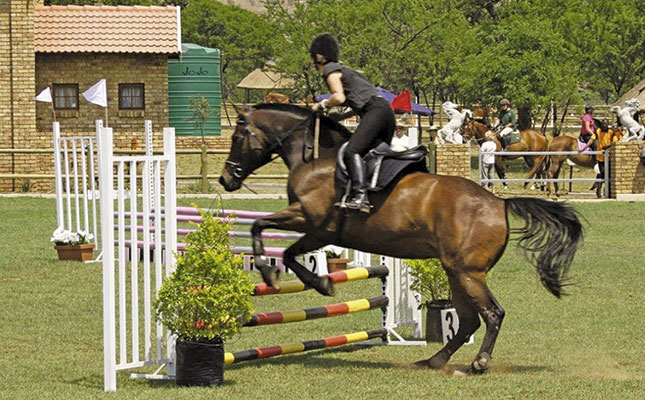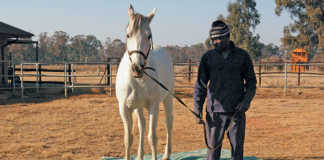
Any horse owner will tell you of the hours of laughter that can be had from sharing jump stories. Go to any horse trials and you’ll notice how difficult it is to find a spot next to the water jump. Very few riders are confident when it comes to jumping. Which is strange, as horses have a natural ability to jump. What’s more, equine psychology tells us the horse is programmed to pick up on our confidence. If you’re nervous when approaching a jump, the horse will definitely be scared.
Now, I’ve said most riders aren’t confident when it comes to jumping, but this doesn’t mean they don’t like jumping. I don’t know of anyone who can’t resist riding/jumping over a pole raised a few centimetres off the ground. It’s big fences most riders avoid. Yet, even here, were you to ask them if, secretly, they’d like to be able to take on such ‘heights’, I reckon about 90% would say yes, they just lack the nerve. If you’re one of these, don’t give up hope. There are several ways of overcoming your fear of jumping.
Jumping is a mini-adrenaline rush. The feeling of being out of control and of being lifted off the ground can be addictive. Unfortunately, though, most riders approach the discipline of jumping as a ‘big event’ instead of an every day thing. They usually get so worked up that logic flies out of the window.
Rewire
Very often, if you think about something in a certain way, you teach the brain that it’s a real thing to fear. The more you ‘rehearse’ this pattern, the stronger the fear becomes. Logic is useless – jumping is something to fear, and that’s that.
The answer is to ‘rewire’ your brain. Visualisation (picturing yourself doing the perfect jump) is a good start.
Another way is to set up a course of really high jumps, and then to ride around them without attempting to jump them. Next, raise them a little more, and keep riding around the jumps. Now put each jump down one hole at a time, and keep riding around them – until you’re ready to jump. This really works.
Improve your skills
Here are some steps to follow that will help you improve your jumping skills:
- Find a trainer you can trust; one who’ll move at your pace.
- Try to practise on a horse that’s well-schooled, and wants to jump. Often if a horse refuses to jump it’s because you’ve stopped riding ‘into’ the fence (usually because you were expecting trouble). Make all the funny fences at home so that at a show everything looks normal to your horse. This way you won’t spot ‘the one he’ll stop at’, meaning you’ll be ‘comfortable’.
- Don’t leave the arena until you’re ready to handle more.
- Follow the same routine each time – a warm-up, then trotting poles, then something more demanding.
- If you practise on your own, only jump what you feel comfortable with.
Finally, remember the more you practise, the more your brain will trust the ‘process’. Visualise yourself jumping, see the fence through your horse’s eyes, hear the hooves on the ground, feel the sensation of the perfect approach, take off and landing.Very often I find that if someone does in-hand jumping with their horse they find peace, because then they can visualise what their horse looks like when jumping.
Certainly, I find it easier to relax when I can see how my horse reacts when it jumps on the end of a lunge line – and we bond during this exercise.
Contact Kim Dyson on 082 888 6511 or at [email protected]. Please state ‘Horse therapy’ in the subject line of your email.













